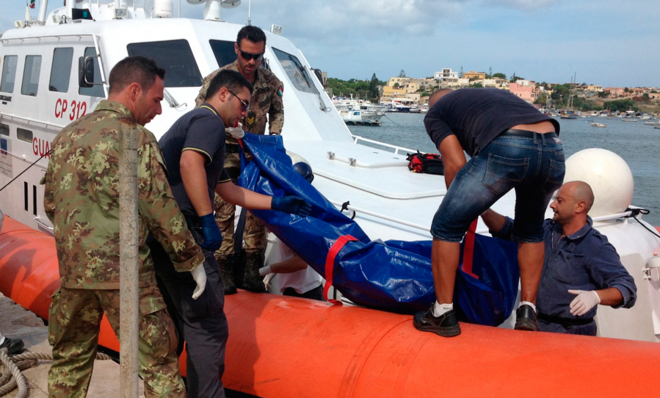The most dangerous routes into Europe
Lampedusa is just one

Italian rescue crews are still pulling bodies from the water from Wednesday’s shipwreck, after a 66-foot boat packed with some 450 men, women, and children caught fire and sank in the Mediterranean. At least 111 people, mostly migrants from Eritrea, Ghana, and Somalia, drowned. Another 200 still are unaccounted for, according to Italian authorities. It is one of the deadliest of such crossings on record — but then, records are incomplete.
“No one knows how many wrecks there are that we haven’t heard about,” says Italian blogger Gabriele Del Grande, who tracks news reports of migrant deaths. “Only the families of the missing know. From Morocco to Sri Lanka, they will spend years wondering what happened to their children who left one day for Europe and never returned.”
What we do know is that the number of desperate migrants who die trying to get to a better life in the European Union reaches well over 1,000 a year. If they make it to E.U. soil, the law guarantees they’ll be given a chance to prove their need for political asylum. Here, some of the most popular — and often the deadliest — ways in:
The Week
Escape your echo chamber. Get the facts behind the news, plus analysis from multiple perspectives.

Sign up for The Week's Free Newsletters
From our morning news briefing to a weekly Good News Newsletter, get the best of The Week delivered directly to your inbox.
From our morning news briefing to a weekly Good News Newsletter, get the best of The Week delivered directly to your inbox.
Lampedusa, Italy
Right now is peak crossing period for those trying to get to this Italian island. Just 60 miles off the coast of Tunisia, its the goal of most migrants who journey by boat. Even in summer and early fall, though, the water is notoriously rough and choppy, and storms are frequent. What makes the crossing most dangerous is that the boats of migrants are overcrowded and often unseaworthy, and they lack basic safety equipment, such as life vests. In 2011 alone, some 55,000 migrants got to Lampedusa by boat and at least 1,500 died in shipwrecks. This year, more than 8,000 migrants arrived by sea in July and August, almost all of them smuggled by human traffickers operating out of Libya.
Turkish-Greek border
This used to be the main point of entry for illegal migrants into the E.U. — walk or swim across the border from Turkey, which is not an E.U. member, into Greece, which is. The border is 126 miles long, and almost all of it is made up of the Evros River, with just a little, 6.5-mile stretch of dry land. In 2011, nearly 100,000 immigrants were detained trying to cross from Turkey. That all changed last year, when Greece built a fence on the entire land border and stationed 2,000 troops to guard the river. Now, even when migrants make it across, they don’t always get let in. Amnesty International says Greek police and border guards are turning people back even after they’re on Greek territory — a clear violation of E.U. law. One group of Syrians said they boated across the Evros to a Greek village but Greek police drove them back to the river, forced them into rafts, and sent them back to Turkey.
A free daily email with the biggest news stories of the day – and the best features from TheWeek.com
Boat from Turkey
With the Greek land route becoming less reliable, the route from Turkey to Greece by way of the Aegean coast is on the upswing. Since last year, more than 100 people, mostly Syrian and Afghan families, have drowned trying to reach Greece by boat.
Melilla, Spain
Spain has two tiny enclaves of territory on the coast of Morocco, Melilla and Ceuta, left over from the Crusades. The towns together make up just 12 square miles, mostly taken up by shipyards and fish-processing plants. The towns are heavily guarded and surrounded by 20-foot-high double chain-link fences to keep out would-be migrants, but it doesn’t always work. Just last month, a mob of hundreds stormed the fence and tore part of it down. Nearly 100 of them made it to Spain, while dozens were injured. A riskier route to Melilla is to swim or boat along the rocky Moroccan coastline and try to land at night on the Spanish part of the beach. Hundreds of people manage to do so each year — it’s unclear how many try and fail.
Susan Caskie is The Week's international editor and was a member of the team that launched The Week's U.S. print edition. She has worked for Radio Free Europe/Radio Liberty, Transitions magazine, and UN Wire, and reads a bunch of languages.


